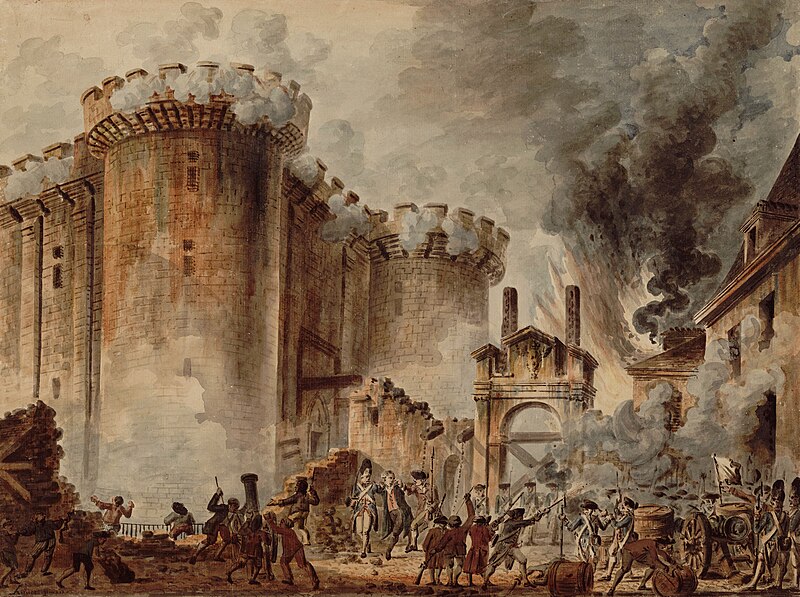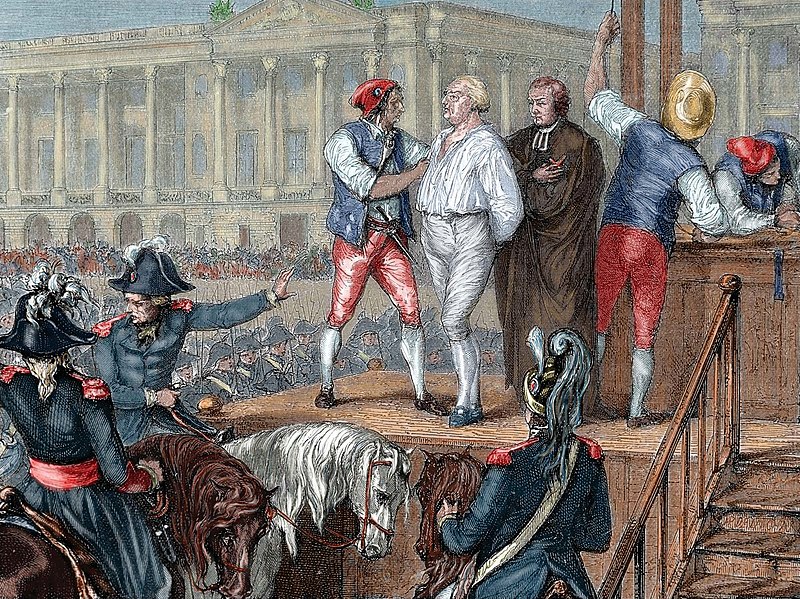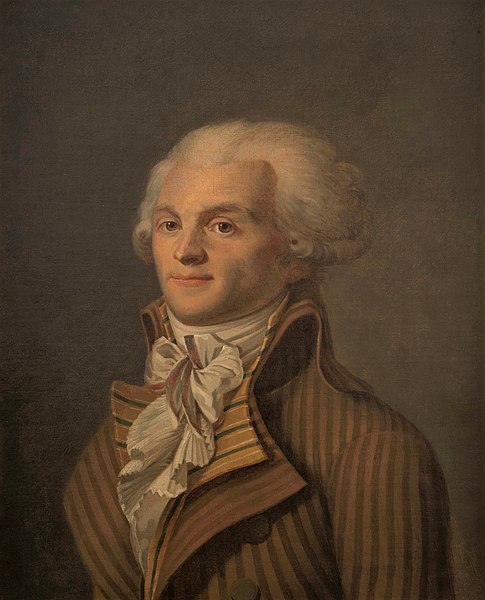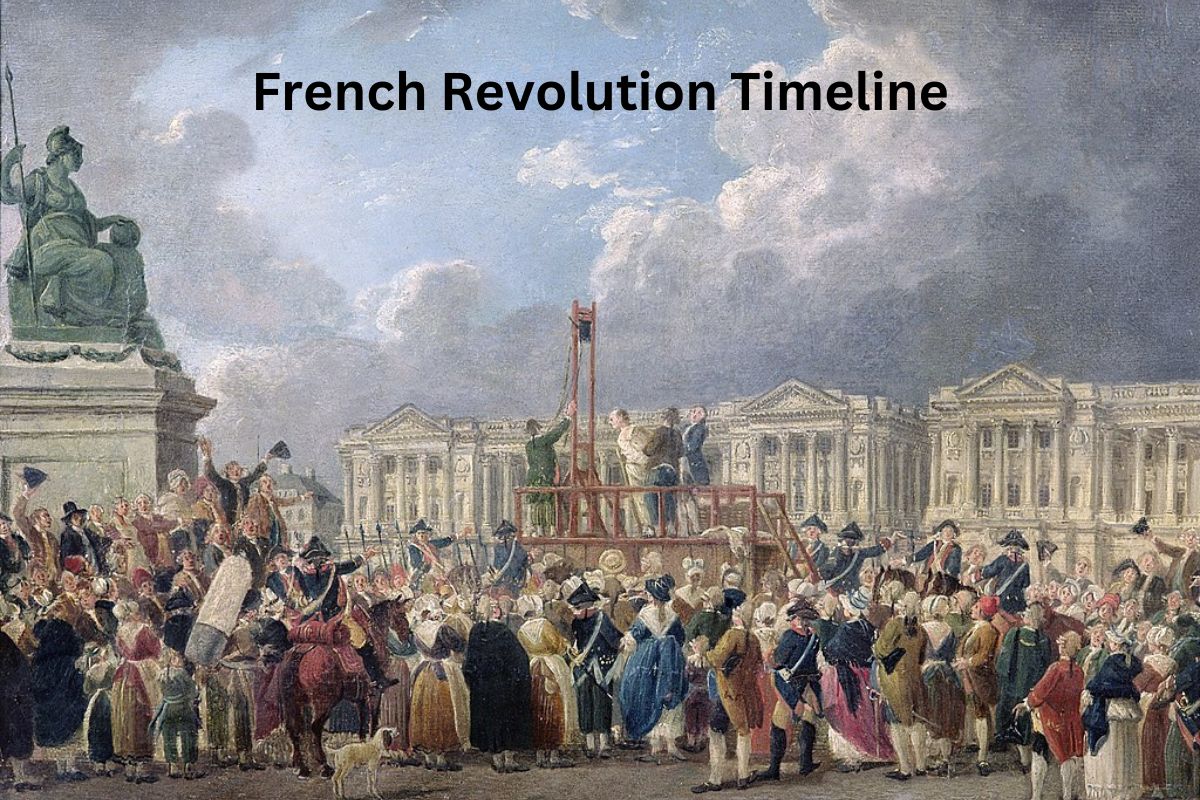The French Revolution, a pivotal period in history spanning from 1789 to 1799, was a tumultuous and transformative upheaval that radically reshaped France’s political, social, and cultural landscape.
It was ignited by widespread discontent, economic disparity, and demands for political representation.
The Revolution saw the rise and fall of factions, the overthrow of the monarchy, the ascent of radical ideologies, and the eventual emergence of figures like Napoleon Bonaparte.
From the storming of the Bastille to the Reign of Terror and the establishment of the First French Republic, these events left an indelible mark on the course of history, inspiring notions of liberty, equality, and democracy while also showcasing the complexities and challenges inherent in revolutionary change.
| Year | Event |
|---|---|
| 1789 | – May 5: Estates-General convenes at Versailles. |
| – June 17: National Assembly forms, leading to the Tennis Court Oath. | |
| – July 14: Storming of the Bastille. | |
| 1791 | – June 20-21: Flight to Varennes. |
| – July 17: Champ de Mars Massacre. | |
| 1792 | – April 20: France declares war on Austria, starting the War of the First Coalition. |
| – August 10: Attack on Tuileries Palace; King’s suspension. | |
| – September 21: National Convention established; monarchy abolished. | |
| 1793 | – January 21: Execution of King Louis XVI. |
| – June 2: Montagnards seize power. | |
| – June 24: Adoption of Constitution of 1793. | |
| – July 13: Assassination of Jean-Paul Marat. | |
| – October 16: Execution of Queen Marie Antoinette. | |
| 1794 | – July 28: Arrest of Robespierre; end of Reign of Terror. |
| – July 29: Execution of Robespierre; Thermidorian Reaction begins. | |
| – October 27: Repeal of the “Law of 22 Prairial”. | |
| 1795 | – October 5: “13 Vendémiaire” – Napoleon suppresses royalist uprising. |
| 1799 | – November 9-10: Coup of 18 Brumaire; Napoleon establishes the Consulate. |
Dates of the French Revolution
1789
May 5: The Estates-General convenes at Versailles. The Estates-General was a representative assembly that included the clergy, nobility, and commoners. The Third Estate (commoners) formed the National Assembly after feeling marginalized by the other two estates.
Also Read: Causes of the French Revolution
June 17: The members of the National Assembly declared themselves the legitimate government of France. Facing opposition from King Louis XVI, they took the Tennis Court Oath, pledging not to disband until a new constitution was established.
July 14: The Storming of the Bastille occurred. The Bastille was a symbol of royal tyranny, and its fall marked a turning point in the Revolution, becoming a symbol of people’s power and resistance against oppression.

1791
June 20-21: The Flight to Varennes took place. King Louis XVI attempted to escape with his family to seek foreign intervention against the Revolution. They were recognized and arrested, which further eroded public trust in the monarchy.
Also Read: Timeline of French History
July 17: The Champ de Mars Massacre occurred. A protest demanding a republic turned violent when the National Guard opened fire on the demonstrators, resulting in multiple casualties.
1792
April 20: France declared war on Austria, igniting the War of the First Coalition. This marked the beginning of a series of conflicts involving European powers and revolutionary France.
August 10: An angry mob attacked the Tuileries Palace in Paris. The King’s guards were overpowered, and the royal family sought refuge in the Legislative Assembly. This event led to the suspension of King Louis XVI from his duties.
September 21: The National Convention was established, formally abolishing the monarchy and proclaiming the First French Republic. The revolutionary government faced both internal and external challenges.

1793
January 21: King Louis XVI was executed by guillotine after being found guilty of treason. His execution marked a radical shift in the Revolution’s direction and heightened tensions within and outside France.
June 2: The radical Montagnards faction, led by figures like Robespierre and Marat, gained control of the National Convention. They enacted various measures, including the Reign of Terror, to suppress counter-revolutionary elements.
June 24: The National Convention adopted the Constitution of 1793, which outlined a more democratic and egalitarian vision for France. However, due to ongoing turmoil and the radical government’s grip on power, the constitution was not implemented.
July 13: Jean-Paul Marat, a prominent revolutionary figure, was assassinated by Charlotte Corday, a Girondin sympathizer who believed his radicalism was harming the Revolution.
October 16: Queen Marie Antoinette was executed, marking another significant symbolic blow to the monarchy.
1794
July 28: The Arrest of Robespierre and his allies occurred. Robespierre, a prominent leader of the radical Jacobins, was arrested by his political opponents within the Convention. This marked the culmination of growing discontent with the radical excesses of the Reign of Terror.

July 29: Robespierre and several of his supporters were executed by guillotine. This event, known as the Thermidorian Reaction, marked the end of the Reign of Terror. The radical Jacobins’ influence was significantly diminished, and a more moderate political atmosphere emerged.
October 27: The “Law of 22 Prairial,” which had enabled the Revolutionary Tribunal to conduct hasty trials and mass executions, was repealed. This signified a shift away from the excessive use of state-sanctioned violence.
1795
October 5: The “13 Vendémiaire” was a conflict between royalist counter-revolutionaries and the Republican government. General Napoleon Bonaparte, then a relatively unknown military officer, was tasked with defending the Convention against the uprising. He successfully used artillery to disperse the royalist forces, which enhanced his reputation and eventually propelled him to power.
1799
November 9-10: The Coup of 18 Brumaire marked the end of the Directory, a period of moderate and ineffective rule. Napoleon Bonaparte, along with other political figures, orchestrated the coup, dissolving the Directory and establishing the Consulate. This event effectively ended the revolutionary phase of the French Revolution and marked the rise of Napoleon’s political career.
